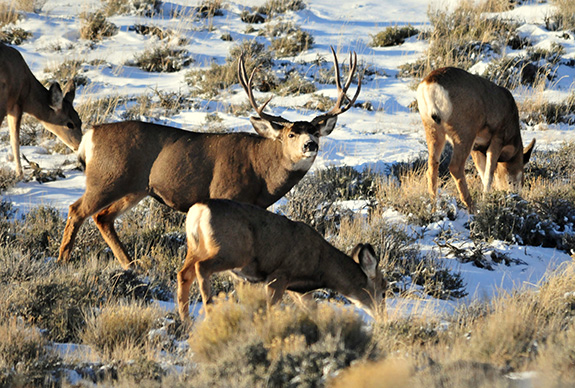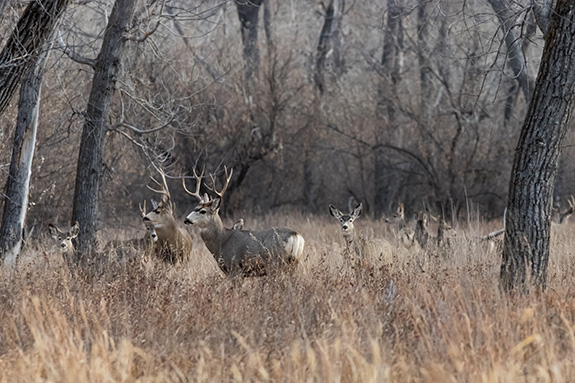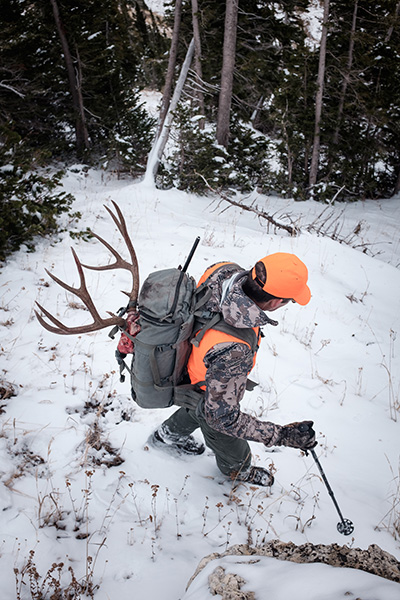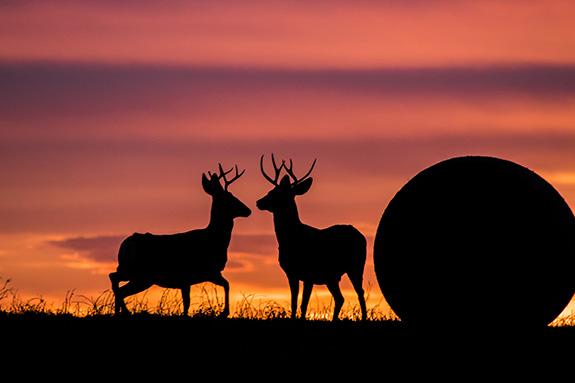Muley Noted
All about hunting mule deer.
By the time I was old enough to hunt and barely old enough to drive, I had killed my first mule-deer buck. I remember that moment vividly, although four decades have passed. It’s as if the memory is etched into the very essence of my being. I wonder if the sight picture of that little fork-horn standing at the edge of an aspen grove above the beaver pond on my grandmother’s ranch will be among the last things I see as I wink out from this big blue marble. If that’s the case, it won’t be a bad thing—it was a beautiful moment that symbolized a rite of passage far more than my first car or my first prom date or the first time I made varsity in anything. There have been many mule-deer bucks on many ridges in several states since then. But I’ll always remember that first one.
Habitat
I often think of mule deer as an animal of the prairie, its ghost-gray coat blending perfectly in the sagebrush sea, a canvas one has to look at twice to see the deer, even though it’s only a hundred yards off.
The foothills are really mule-deer country in this corner of Montana, however, particularly the ground that is a mix of Douglas fir and aspen, with open slopes covered in brush or grass. There are also mule deer right up in the very tops of the basins near timberline. Early in the season, or during archery season, this is the home of the true big loner-buck mule deer.
In southwest Montana, there are several areas where Montana FWP is attempting to manage for trophy mule deer, and these hunts—in places like the Bridgers or the Snowcrest Range—are very difficult to draw, but highly productive for big bucks. The general hunter with an A-tag in his pocket can still find nice populations of mule deer throughout the region on public land, without having to put in for a special tag.

Behavior
Mule-deer bucks tend to be solitary or live in small groups, while females herd up. Weather and season dictate where the animals will be, as they migrate from subalpine forests and meadows to winter range in the valleys once the temp drops and the snow flies.
In the fall, bucks are heavily influenced by the rut, when a typically wary animal is at the mercy of biology. It’s at this time that you might find bucks near herds of does. Earlier in the fall, bucks stick to the edges of doe territory; they’re in the picture, but not necessarily cohabitating.
Many hunters figure bucks will shadow does throughout the entire hunting season, which might explain why some hunters return empty-handed if they’re out stalking early in the season. Again, paying attention to the rut will clue you in to where bucks might be, if indeed bucks are your quarry. Muley does, while notoriously easy to hunt, taste just as good as—and usually better—than bucks, but they typically require a special permit.

Gear
Good optics are right at the top of my list. Buy the best binoculars you can find. There are a lot of good ones out there; go to the store and try them out and buy the most expensive ones you can afford.
Unlike whitetail hunting, where one may only be a mile or so from the truck, I’ll go with a bigger list of gear when I’m out on public land for a day after mule deer. To start: a good day pack, survival kit, plenty of water and layers, a good knife.
Although I love the tradition of a rifle with a beautiful wood stock, there’s something to be said for today’s lighter rifles when you’re going all day in the mountains. I also like flat-shooting calibers like .270, 7mm Remington Mag., and 7mm-08. That being said, nothing beats a .30-06 for Montana mule-deer hunting.
Bow vs. Rifle
Each weapon has its advantages, and both experiences can result in lifelong memories. If you’re hunting in the close quarters of Montana’s timber-choked mountainsides, archery equipment might be preferable. Bow season also starts over a month before rifle season, so muleys aren’t as on-edge. Rifles obviously give you a distance advantage, and the season overlaps with the rut, making the chances of taking a big buck greater. But you’ll also be sharing the landscape with a lot more hunters.
Pack-Out
A large male mule deer can weigh up to 400 pounds, although the average weight is closer to 300. Does weigh about half that, so depending on the proximity to your truck and the size of the animal you bag, you might need to dress, quarter, and pack out the animal. Steep, uneven terrain might also require packing the beast out. If you take a small buck or doe and the hike out isn’t too treacherous, simply dragging the dressed animal might work. Either way, make sure you have the necessary pack for carrying an additional load of meat, and know how to safely store your kill if you have to leave and come back.

Rut
The early-fall rut is an excellent time to take aim at a hormone-filled buck. The burning desire to breed turns otherwise wary males into absolute dopes. Bucks are thus easier to find as they tend to hang around less elusive herds of does. The rut is triggered by how much daylight there is, so the timing is easy to track. If bagging a buck is part of your program, focusing on the rut might be your best bet.
Regs
The mule-deer hunting season is broken into three general timeframes. Be sure to double-check the FWP site for your specific region and district. Archery season starts in early September, so if you’re hunting with a bow, you have a two-month head start. As with all big-game hunting, you’re required to wear 400 square inches of hunter orange during rifle season. It’s always a good idea to keep a copy of the regs in your truck, and check in with fwp.mt.gov before heading out.
Tom Reed works for Trout Unlimited in Pony and is the author of four books.











